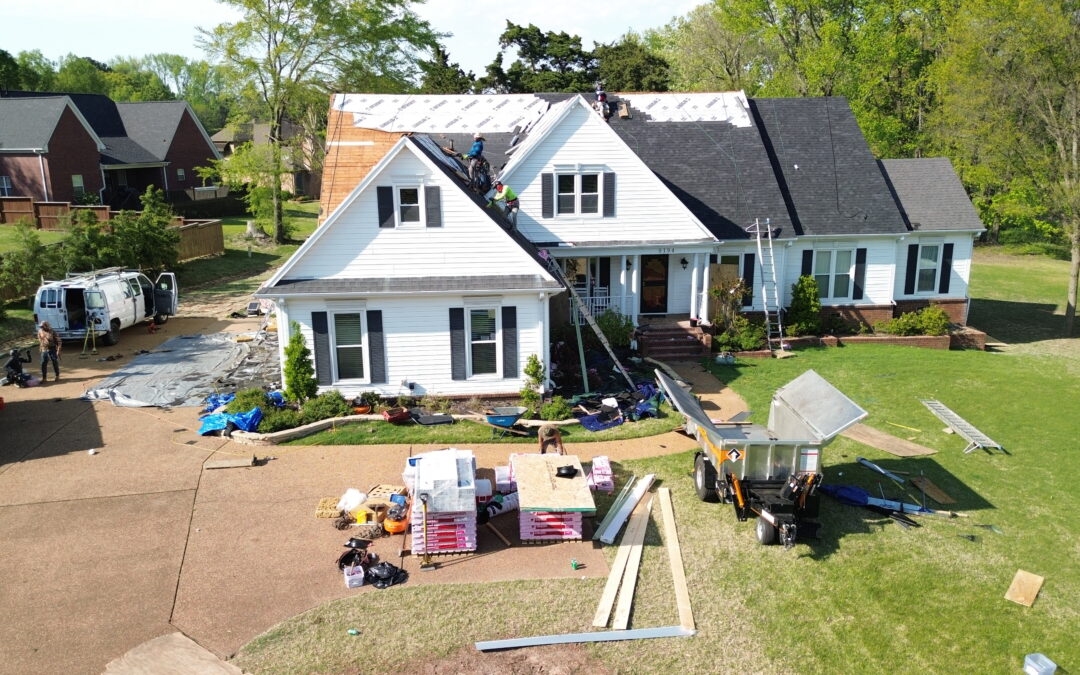When water gets in, the clock starts. Speed protects your home and air. Safety comes first, before cleanup.
Storms in Memphis move quickly and leave behind high humidity. You may be surprised by how long wet walls, floors, and crawlspaces can hold that moisture. A simple plan that focuses on safety, drying, and repair is needed. We act fast if you require water damage restoration services, offering step-by-step instructions, consistent updates, and a plan that works for your house and timetable.
Act Fast and Stay Safe
Shut off the main water supply, if you can reach it safely.
Stay away from wet areas. Do not go near outlets or appliances. Avoid the main breaker box. Water carries electricity easily. You could get a bad electric shock.
Keep all extension cords out of wet rooms. Never touch the breaker box if the floor is wet.
If you smell gas, leave at once. If you hear buzzing wires, leave at once. If the power lines are broken, go outside. Call professional mold removal service immediately. Do not go back inside the house. Wait for an expert to say it is clear. Keep kids and pets away from all wet spots. A professional must check for danger first.
We are licensed and insured, and we follow safe entry steps before work begins.
Why the First 24–48 Hours Matter
Our air is often very humid here. When the air stays wet, moisture soaks into the floors. It also seeps into baseboards and drywalls. If you wait too long to dry things, mold growth will start. You will also get a lasting, musty smell. Acting fast improves the air inside your home. It also means we have less to tear out and replace later.
Here’s a simple local example. A Saturday storm hits, rain creeps under a patio door, and the family notices damp carpet the next morning. A fast dry-out keeps the work to one room instead of three.
Mold does not wait.
Starting water damage restoration early often protects finishes, furniture legs, and nearby rooms that might otherwise wick moisture.
What Professional Water Mitigation Includes
We begin with extraction to remove standing water from floors and carpet. Then we set containment so dry rooms stay dry and airflow goes only where it helps.
Next, dehumidifiers take water out of the air. Strong fans dry the surfaces. Our team checks how wet things are often. We have set goals for dryness. We adjust the equipment until everything is dry enough. Our water damage restoration services pair proven water mitigation steps with clear communication so you know what comes next.
Here is an example. A 3 p.m. summer downpour shakes the laundry supply line. You find a wet baseboard the next morning. We extract, remove wet pad if needed, open the baseboard line for airflow, and document readings until the wall returns to goal.
Materials: What to Dry and What to Remove
Porous materials such as carpet pad, saturated drywall, and particleboard hold water and may need removal. Non-porous or semi-porous materials like sealed tile, some hardwoods, and metal can often be dried in place with the right setup.
Baseboards may come off to vent the wall cavity. Small, neat openings near the floor let air reach the damp space behind the drywall and speed the dry-out.
Salvage choices depend on how long the materials stayed wet and on the water source. A clean supply leak is handled differently than storm runoff or a drain backup.
Moisture Mapping and Monitoring
We map wet areas with meters and thermal tools. Surface readings confirm what you can see, and hidden cavity checks confirm what you cannot.
Daily documentation includes photos, moisture logs, and notes on any changes to airflow and equipment. This steady record prevents guesswork and shows progress toward dry standards that match your materials.
Hidden moisture is the enemy.
Regular monitoring prevents rebound moisture after equipment is removed. It also catches pockets under stairs, behind cabinets, or in crawlspaces that often stay damp in Memphis homes.
Sanitizing and Mold Prevention
We clean all affected areas correctly. We bag up any debris for safe removal. We use HEPA vacuuming to clean up fine dust and spores. This includes your floors, trim, and air vents.
We may use safe cleaning treatments when needed. We apply products correctly and keep ventilation in mind so surfaces dry fully before rebuild.
It might be time to hire a mold removal service for targeted work if, after a few days, you already notice extensive growth or detect strong musty odors. Good water damage restoration techniques eliminate moisture and the food sources that mold prefers.
Insurance and Documentation
Photos, notes, and item lists help you tell the full story. We label rooms, causes, time of discovery, and the first steps taken.
A clear scope and daily updates support your claim and can shorten review time. Adjusters can see readings move toward dry goals and sign off on repairs sooner.
We share copies of all documents so you can submit a complete packet without chasing paperwork.
When to Call Pros Right Away
Call us right away if you see active drips. Call us if ceiling or drywall is sagging. Other clear signs of water are buckling floors or spreading stains.
If the fans run and the musty smell stays, it means water is still hiding. If the same spot leaks often, it means a bigger problem is upstream.
Note the time the water started. Take a few pictures. Then call us right away. The sooner we start, the easier the fix is for most Memphis homes.
Following the Dry-Out: Avoid the Next Incident
To ensure that water runs off the slab, keep gutters clear and extend downspouts. Check grading so rain does not run back toward the house during those fast afternoon storms.
Test sump or condensate pumps and replace weak hoses or float switches. Supply lines to toilets, ice makers, and washers deserve a quick check every season.
A Memphis seasonal tip helps here. In late spring and August, humidity runs high, so change HVAC filters and run the system to keep indoor moisture in check.
Final Takeaway
Move quickly, stay safe, and follow a plan that includes extraction, drying, and steady checks. If you need water damage restoration services, call us now. We help you right away. We make a plan that is right for your home.
We work in near by Memphis towns. Our teams are licensed and insured. We follow every local rule. We respond fast, take good notes, and guide you through the process.
Call now for your free evaluation, or fill out the form today.
FAQ
How fast should dry-out start?
Dry-out should start as soon as it is safe to enter, because early steps limit damage and help prevent mold growth.
What does daily monitoring include?
Our technicians log moisture readings, inspect hidden cavities, adjust dehumidifiers and fans, and capture photo updates.
When should I call a mold removal service?
Call if growth is visible across larger areas, odors stay strong or readings remain high after several days of drying.

Chris Price is the CEO of Metro Builders, with over 25 years of experience in construction and project leadership. He’s passionate about building strong teams, delivering quality projects, and driving innovation in the industry.



Recent Comments